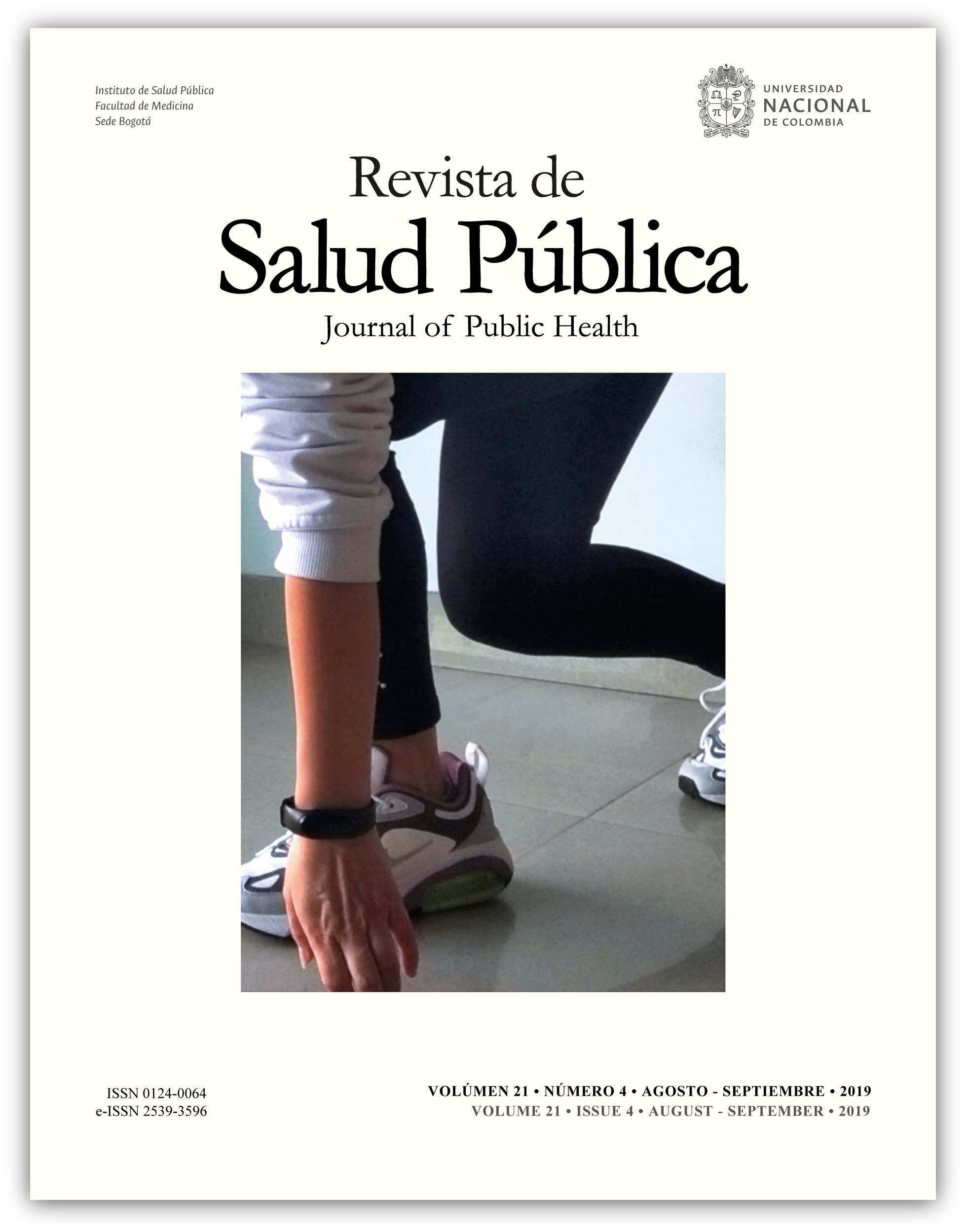Neurociencia y ejercicio: un indicador de salud y aprendizaje en el contexto educativo
Neuroscience and exercise: an indicator of health and learning in the educational context
DOI:
https://doi.org/10.15446/rsap.v21n4.66794Keywords:
Salud pública, educación, ejercicio (es)Salud pública, educación, ejercicio (en)
Downloads
En los últimos años, la neurociencia ha demostrado los beneficios particulares y globales del ejercicio y de la vida activa en la salud de los escolares, ya que enriquecen las redes neuronales, la plasticidad y producción de neurotransmisores que favorecen distintos dominios del comportamiento y condición humana. En este contexto, el objetivo del ensayo es dialogar en función de la importancia de una vida activa en el contexto educativo y de una disciplina que no solo cumple un rol a nivel cerebral o morfofuncional,sino más bien multidimensional, que emerge desde el nivel molecular, celular, cerebral, sistémico, psicológico y social. Por ello, una de las principales conclusiones tiene que ver con la posibilidad de permitir a los y las estudiantes que sean capaces de comprender y reflexionar en función de sus procesos vitales, que posibilitan sus aprendizajes como un continuo armónico entre la organicidad y la cultura, entre vida y lenguaje.
In recent years, neuroscience has shown the particular and global benefits of exercise and active life in the health of students. They enrich neural networks, plasticity and production of neurotransmitters that favour different domains of human behavior and condition. In this context, the objective of this essay is to dialogue based on the importance of an active life in the educational field and a discipline that not only plays a role at the brain or morphofunctional level, but rather multidimensional, which emerges from the molecular level, cellular, cerebral, systemic, psychological and social. Because of this, one of the main conclusions is related to the students’ possibility of having the ability to understand and reflect processes that enable learning according their own life, as an harmonic continuum between organicity and culture and between life and language.
References
Moreno J, Cerezo C, Guerrero J. Motivos de abandono de la práctica de actividad físico-deportiva en los estudiantes de Bachillerato de la provincia de Granada. Revista de Educación. 2010 Sept [cited 2020 Apr 9]; 353:495-519. Available from: https://bit.ly/3e9VR81.
Maturana H. Desde la biología a la psicología. Santiago de Chile: Editorial Universitaria; 2005.
Varela F. Fenómeno de la vida. Santiago de Chile: JC Editores; 2016.
Navarro B, Osses S. Neurociencias y actividad física: una nueva perspectiva en el contexto educativo. Rev. Med. Chile. 2015 Jul [Cited 2020 Apr 9]; 143(7):950-951. Available from: https://bit.ly/3aZhplH. DOI:10.4067/S0034-98872015000700019.
Toro S. Motricidad, en-acción y fenomenología: la articulación conceptual de la existencia. Motricidades. 2017 [Cited 2020 Apr 9]; 1(1):78-90. Available from: https://bit.ly/2x8qiuL. DOI:10.29181/2594-6463.2017. v1.n1.p78-90.
Cappuccio M. Handbook of embodied cognition and sport psychology. Massachusetts: MIT Press; 2019.
Nithianantharajah J, Hannan AJ. The neurobiology of brain and cognitive reserve: Mental and physical activity as modulators of brain disorders. Prog Neurobiol. 2009 Dec [cited 2020 Apr 9]; 89(4):369-82. Available from: https://bit.ly/2VjABUu. DOI:10.1016/j.pneurobio.2009.10.001.
Lautenschlager NT, Cox K, Cyarto EV. The influence of exercise on brain aging and dementia. Biochimica et Biophysica Acta (BBA)-Mol Basis Dis. 2012 [Cited 2020 Apr 9]; 1822(3):474-81. Available from: https://bit.ly/2Vfukt3. DOI:10.1016/j.bbadis.2011.07.010.
Cotman CW, Berchtold NC. Exercise: a behavioral intervention to enhance brain health and plasticity. Trends Neurosci. 2002; 25(6):295-301. Available from: https://bit.ly/2UV4bRi. DOI:10.1016/s0166-2236(02)02143-4.
Albornoz Y. Emoción, música y aprendizaje significativo. Educere. 2009 [Cited 2020 Apr 9]; 13(44):67-73. Available from: https://bit.ly/2UU8w7k.
Maturana H, Dávila X. Historias de nuestro vivir cotidiano. Evolución del cosmos que aparece cuando explicamos nuestro vivir. Santiago de Chile: Paidós; 2019.
Moreno-Murcia JA, Sicilia A, Cervelló E, Huéscar E, Dumitru DC. The relationship between goal orientations, motivational climate and selfreported discipline in physical education. J Sports Sci Med. 2011 [Cited 2020 Apr 9]; 10(1):119. Available from: https://bit.ly/2UXB4gs.
García-Hermoso A, Hormazábal-Aguayo I, Fernández-Vergara O, et al. A before school physical activity intervention to improve cognitive parameters in children: The Active Start study. Scand J Med Sci Sports. 2020 Jan [Cited 2020 Apr 9]; 30(1):108-16. Available from: https://bit.ly/39Wk4eA. DOI:10.1111/sms.13537.
Peña-Troncoso S, Osses-Bustingorry S, Navarro-Aburto B, Beltrán-Véliz JC. Hacia la disminución de los test físicos como indicadores de salud en el contexto educativo. Salud pública de México. 2017 [Cited 2020 Apr 9]; 59(5):506-7. Available from: https://bit.ly/2VgV9gz. DOI:10.21149/8054.
How to Cite
APA
ACM
ACS
ABNT
Chicago
Harvard
IEEE
MLA
Turabian
Vancouver
Download Citation
License
Copyright (c) 2019 Revista de Salud Pública

This work is licensed under a Creative Commons Attribution 4.0 International License.
This journal provides immediate free access to its content under the principle that making research available to the public free of charge supports a greater exchange of global knowledge.
All contents of this journal, except where identified, are published under a Creative Commons Attribution 4.0 License




















